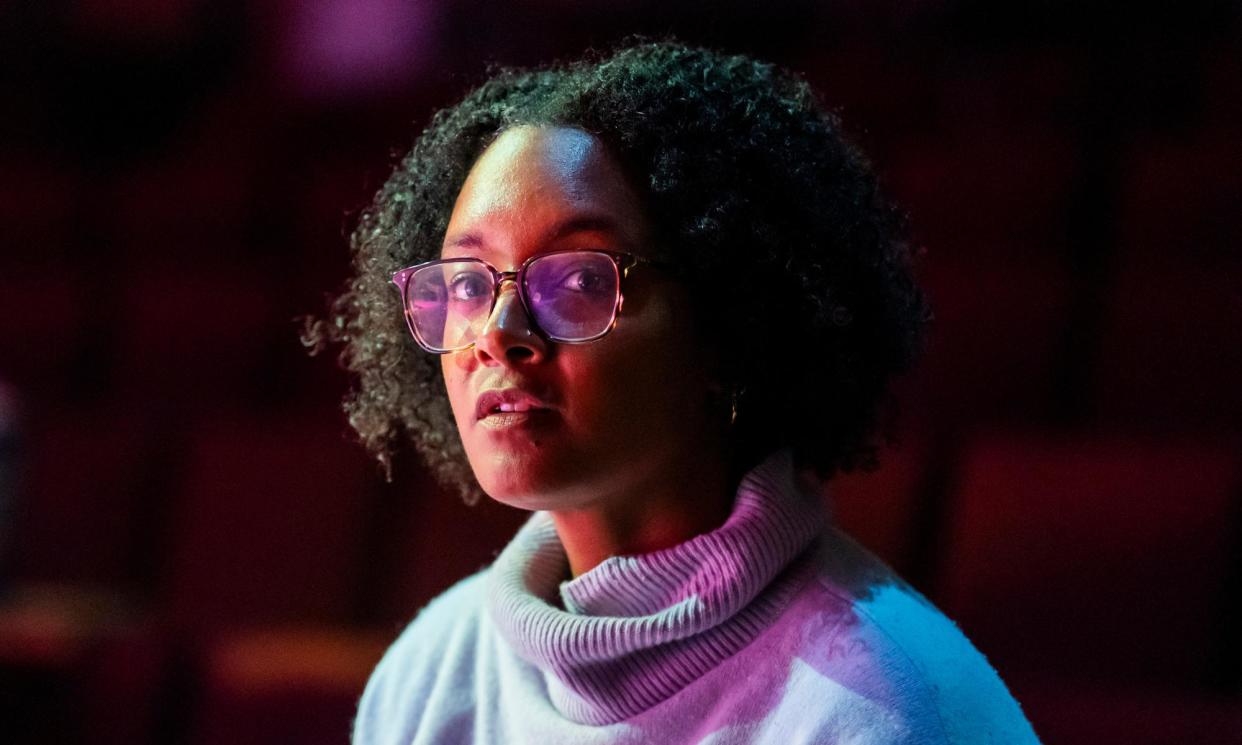Lack of arts schemes for working class will make UK theatre whiter and posher, director says

The lack of investment in arts schemes aimed at working-class children will create a cultural landscape that is whiter and posher, according to one of the UK’s leading black British theatre directors.
Tinuke Craig, who has worked on productions including the Donmar Warehouse’s Trouble in Butetown, said the current crop of black British theatre talent was developed in the 1990s when free schemes aimed at improving access to the arts for working-class communities were common.
Craig, who was brought up in Brixton, refers to the 90s as the “peak scheme era”. Since then, Arts Council England funding has been cut by more than 30% and several academic studies have shown that the arts are becoming the preserve of the wealthy – and Craig fears productions are producing a narrower worldview.
“I worry about that,” she said. “It won’t be immediately noticeable, but it suddenly will be 15 years down the line and we’ll go: ‘Oh, all the directors coming out of drama schools this year are from this very, very specific demographic, in terms of money and in terms of class and race.”
Craig is seen as one of the most exciting young British theatre directors in Britain and is part of a wave of diverse talent in the West End and on other UK stages, which includes Paapa Essiedu in Death of England: Delroy, The Hot Wing King at the National Theatre and Shifters in the West End.
Her latest work is an adaptation of A Raisin in the Sun, Lorraine Hansberry’s classic story about a black family trying to move to a white suburb of Chicago, which was the first production written by a black woman to be staged on Broadway.
The play made Hansberry, who wrote it at the age of 27, a star, and Craig says its themes of home, safety, racism and belonging have an extra resonance after far-right mobs attacked black and brown communities around the UK this summer.
She said the recent riots were a reminder that the themes of the play were live issues for lots of British people who may not feel safe in a country that tells them that they’re not “really British”.
Craig said: “There is a lot of that conversation and thought happening in the minds of black people and other people of colour at the moment. This is my home in theory, I live in the UK, but there’s this sense that whatever happens there will always be someone who will say you don’t belong here and you’re not safe here.”
A Raisin in the Sun is produced by Headlong and will tour the UK, starting at Leeds Playhouse on 13 September.
Hansberry’s work has been reassessed recently with new biographies about her short life – she died aged 34 from cancer in 1965 – painting her in a more radical light. She was often depicted as a chic member of the literati during her lifetime, but she was a fierce civil rights activist, scolding Robert Kennedy when he called a meeting of black intellectuals, while one of her final talks to a group of young black writers inspired Nina Simone to coin the term “young, gifted and black”.
The UK has hosted several adaptations of the play, including a 2016 revival at the Crucible theatre in Sheffield, and Lennie James starred in one at the Lyric Hammersmith in 2005. A spin-off work called Beneatha’s Place was written by Kwame Kwei-Armah in which the action moved to Africa.
The playwright Lynn Nottage called A Raisin in the Sun a “perfect piece of literature” and Joi Gresham, who leads the Lorraine Hansberry Trust, said the play endured because it was dealing with issues way ahead of its time.
Gresham said: “We have a mantra at the trust, which is two-parted: the first part says Lorraine is of the future and the second part of it says we are chasing Lorraine. She was always leaning forward and she was very futurist – in her work and in her speech, what she talked about, what she thought about, and so she’s really left us a play that we’re growing into.”


